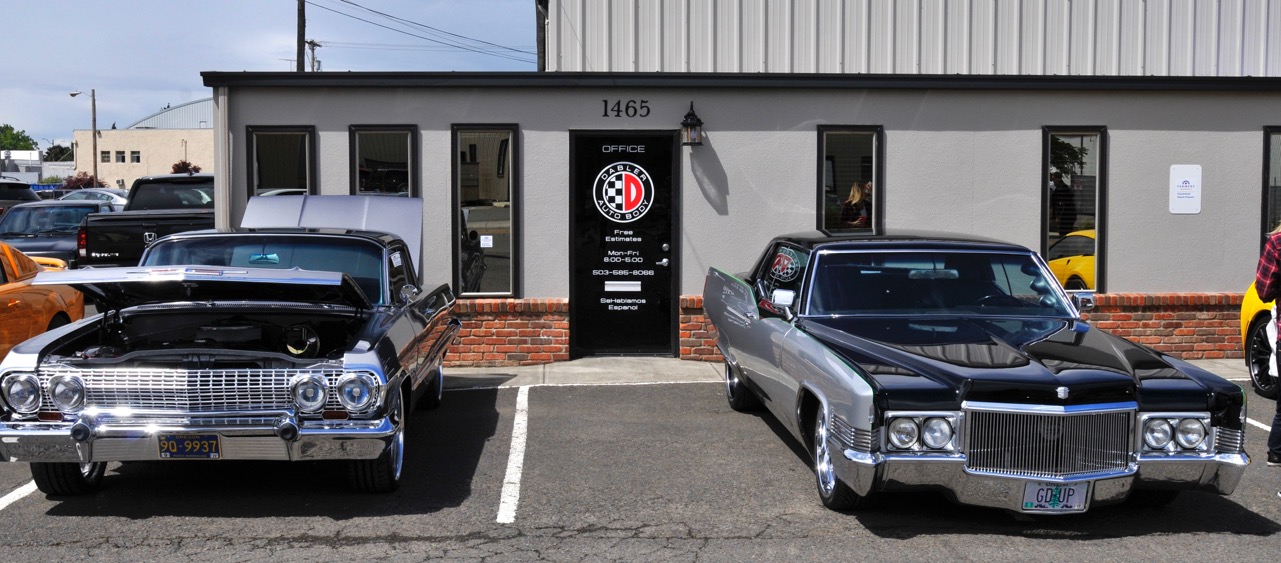When one starts to travel around during the summer, you’ll notice how much fuel efficiency you get on your trips. Well, we think about these things, and aerodynamics too! But are today’s cars better than it’s predecessors? Well, here’s a vintage car that might bend the rules a bit.
Wired.com – Source
What makes the Prius so fuel efficient? The hybrid drivetrain is a big part of it, yes, but put that into a box on wheels like the Mercedes-Benz G-Wagen or even a Kia Soul and it’s not nearly so helpful. The Prius can deliver 51 mpg in no small part because Toyota engineers toiled tirelessly at their computers and in the wind tunnel to ensure it slices through the air as effortlessly as possible.
Yet compared to the Schlörwagen, a German experimental vehicle from 1939, the Prius is a brick. The hybrid has a drag coefficient (a measure of how efficiently it moves through air) of 0.25, which puts it ahead of the Nissan Leaf and Chevrolet Volt but behind the Tesla Model S and Mercedes-Benz CLA diesel. The Schlörwagen crushes them all, clocking in at an incredible 0.15. It also seated seven, once had a Russian aircraft engine strapped to it, and may have been stolen by the English after World War II.
Despite the lack of widespread wind tunnel testing and computer modeling, the 1920s and 1930s were a booming era for aerodynamics. The Czech Tatra 77, Chrysler Airflow, and Mercedes-Benz 540K Streamliner were impressive attempts to limit drag. These cars “conformed to the still fairly primitive understanding of aerodynamics (or streamlining) of the day, which approximates to making a car as close to a teardrop as possible,” says Sam Livingstone, director at Car Design Research and a judge for the World Car Awards. They looked a bit unusual but not loony, and they went into production, with varying levels of success.
The Schlörwagen was something else altogether. German engineer Karl Schlör, at the Aerodynamischen Versuchsanstalt (Aerodynamic Institute) in Göttingeng, started with a 38-horsepower Mercedes 170H. Inspired by the shape of airplane wings, he redesigned the exterior, setting the windows flush with the shell for cleaner airflow and extending the body over the front wheels. “Basically, the Schlörwagen is a wing on wheels,” says Andreas Dillmann, head of the Institute of Aerodynamics and Flow Technology at the German Aerospace Center (DLR), the successor to the Aerodynamischen Versuchsanstalt.
The result, unveiled at the 1939 International Motor Show in Berlin, was nicknamed the “Göttingen Egg.” It was nearly seven feet wide (just inches narrower than a first-generation Hummer) and had three-row seating for seven.
The changes worked: The 170H topped out at roughly 65 mph. The Schlörwagen, using the same engine, hit 84. And it needed just eight liters of fuel to cover 62 miles, a 20 to 35 percent improvement. The 0.15 drag coefficient is beaten only by modern designs of less practical cars like the General Motors EV1 and Volkswagen XL1.
The only example of the Schlörwagen was kept in a run-down building near Göttingen, where the seats and wheels were removed during the war. The British Military Administration eventually towed it away somewhere, and it hasn’t been seen since. One theory says the car was sent to England, but Jessika Wichner, head of the DLR Central Archive, says “it’s extremely likely that the severely damaged body was quite simply scrapped.”
To mark the 75th anniversary of the car’s creation, Dillmann’s team built a 1:5 scale model based on the original drawings, and put it in a wind tunnel to see how it performed. They found that air clung tightly to the vehicle, without causing stalls or turbulence that would slow it down.
So why didn’t this wind-breaking wonder become the new template for cars everywhere? Schlör’s focus on aerodynamics came at the cost of other considerations. For example, the car is remarkably sleek head-on and moves through the wind almost effortlessly, but the car is so tall that a stiff crosswind could send it careening to the side.
When war came to Europe, the car was largely forgotten after a final hurrah: In 1942, engineers rigged it with the engine from a captured Russian airplane. The ungainly creation, with an extra 130 horsepower, made a few laps of a test track in Göttingen. If anyone was hoping for a performance breakthrough, though, it clearly didn’t work out.
While a fascinating historical relic, the Schlörwagen doesn’t have much to teach us about automotive design, Livingstone says. It was simply too singular in purpose, with little concession to the other things we want from our cars. “Clearly, modern cars must essentially embrace a form inherently less aerodynamic to afford a decent ‘package’ for the cabin space, and also deliver good visibility, crash performance and engine cooling.”
So don’t expect to see anything like the Schlörwagen again, much less anything with a Russian aircraft engine bolted to the trunk.

